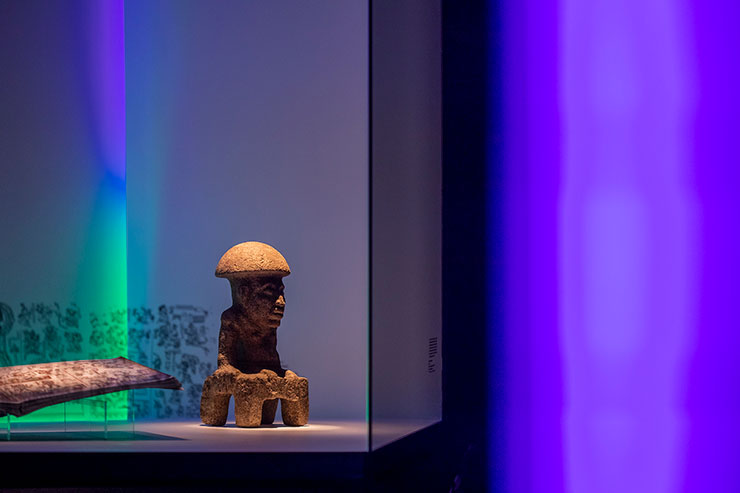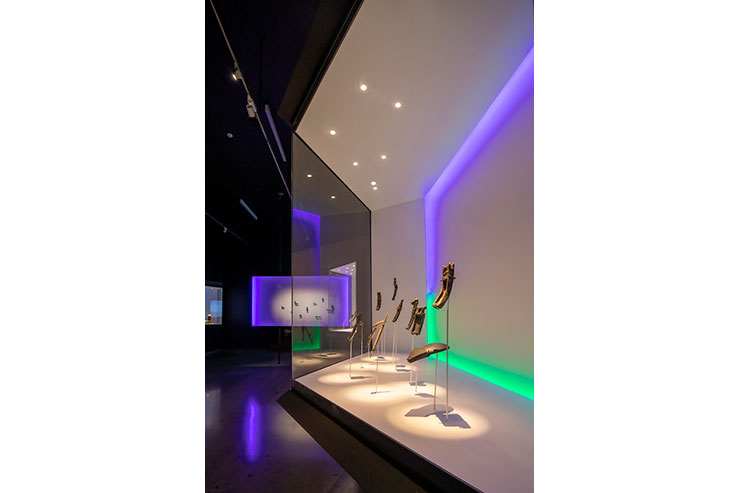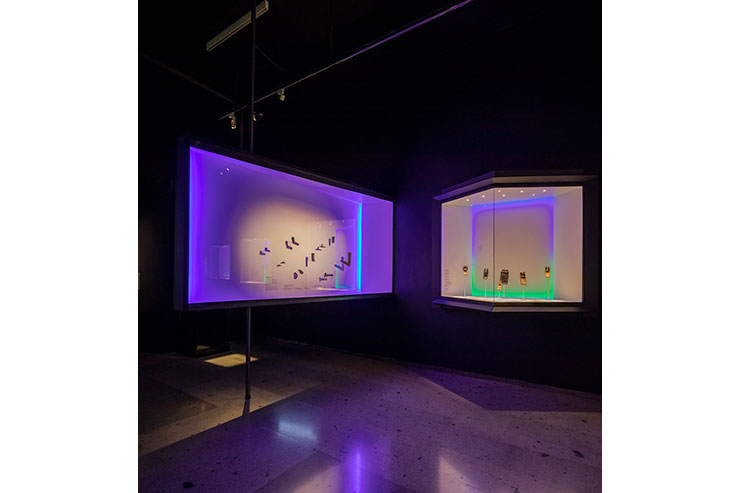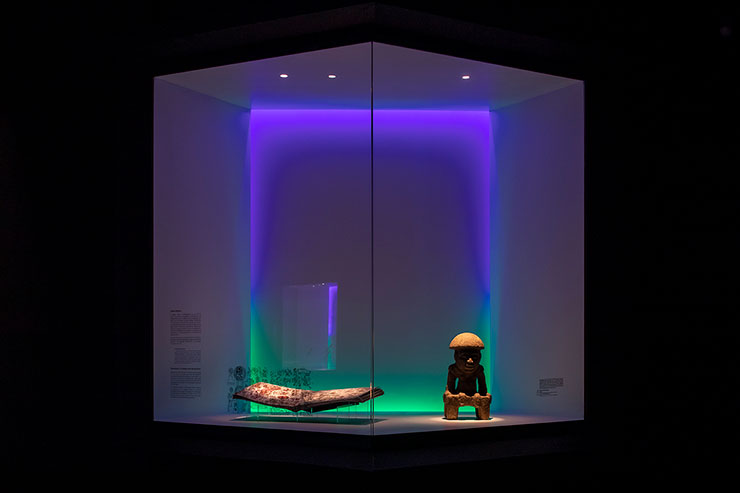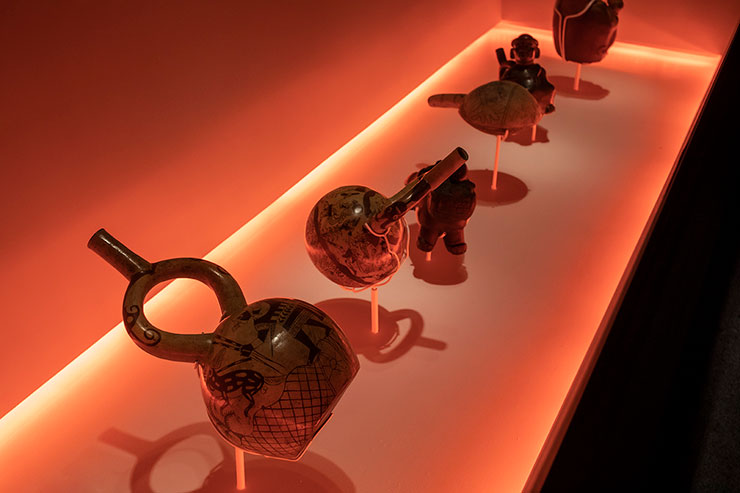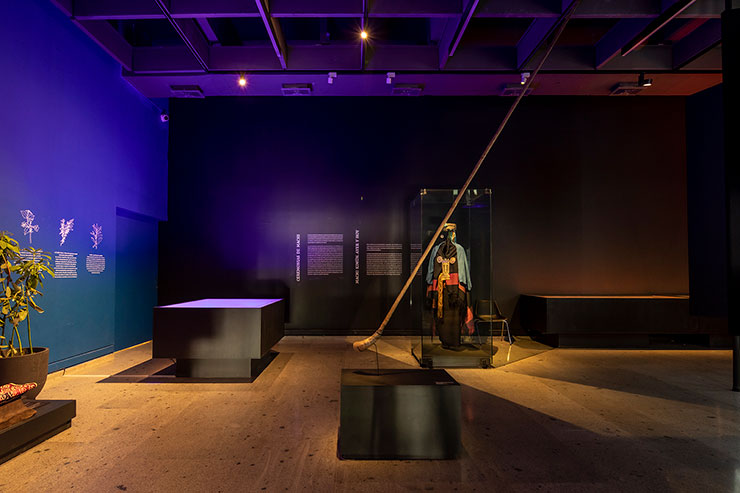This website uses cookies so that we can provide you with the best user experience possible. Cookie information is stored in your browser and performs functions such as recognising you when you return to our website and helping our team to understand which sections of the website you find most interesting and useful.
Chamanismo - visions out of time, Chile
ProjectChamanismo - visions out of timeLocationSantiago, ChileLighting DesignAntonia Peón-Veiga, ChileArchitectRodrigo Tisi, ChileClientMuseo Chileno de Arte PrecolombinoLighting SuppliersErco, AckoPhotographyAryeh Kornfeld
Shamanism, visions out of time is the name of the temporary exhibition that will be on display during the first semester of 2023 at the Chilean Museum of Pre-Columbian Art.
As its name suggests, it exhibits a collection of pre-Columbian objects associated with shamanic practices that occurred and continue to occur in the American continent.
“The work proposes to present the objects in a very non-traditional way. The object is not highlighted by light, as museums traditionally present, but instead they are coloured atmospheres that propose sensations of altered perception” in the words of Rodrigo Tisi, who did the museographic design.
The great lighting challenge was solving how to generate these coloured environments that, on the one hand, would lead to the imaginary of the journey of altered perception and, on the other hand, would allow the exhibited pre-Columbian art objects to be seen in a concrete and correct way.
In order to combine these two requirements, the decision was made to work light from two planes in relation to the exhibited objects. A plane behind the object that the colored light would work on, and a plane of light in front of the object, white light and good colour rendering. The object would finally work as a fusion element between these two layers, without losing its own character in terms of shape, materiality and colour. The hard shadows on the objects try to get closer to the original visuality of these elements, which were seen only through sunlight.
Coloured light passes through the objects creating lighting environments in the rooms, and the objects are perceived as suspended in that environment, exposing themselves in all their splendor in terms of their correct colour rendering (CRI 95).
It was also important to think about the viewer’s journey and how the story would be built when going through the space.
The exhibition has two main rooms linked by a tunnel. It was decided to locate in the first room elements associated with medicinal plants and objects used for their consumption. The color green was used for this environment in relation to nature (the botanical illustration of medicinal plants, nature as a provider) and blue as a connector with the depth of the human being. Then, when going through the transition tunnel between the two rooms, mirrors and repeating visual effects were used, alluding to visions of altered perception or travel to parallel dimensions.
After this trip, you enter the room where the most sculptural objects are, which refer to shamanic practices; mainly figural vases and sculptures.
The room ends in the deep blue of the Mapuche collection, a pre-Columbian culture from southern Chile, where are exhibited vases, the Canelo tree, the Rewe (figure carved in wood that is buried at the base and represents the connection with the cosmos) and clothing of the Mapuche healing woman named Machi.
